"Hey, there's a nurse shark," says Captain Eric Lund. His nonchalant tone doesn't jibe with the words. From my perspective as landlocked for life, a shark sighting is cause for exclamation.
The hulking burgundy form shadows the skiff, wig-wagging over turtle grass while I snap photo after photo. And they all suck. Too many shadows, and the shark is just too deep through the jade-shaded crystal water. Auto focus can't capture the fish and I'm too slow on the draw manually.
A baby barracuda squirts from the mangroves and stills just under the surface near the boat like it's posing. I snap the digital shutter, but I'm still bummed about missing the shark.
"There'll be more sharks at the marina," says Lund, again with total blase that comes across to me as damn near condescending, like he's talking to an eager kid. I know he doesn't mean it that way. Sharks, barracuda, snook and manatees are just part of Eric's everyday life, as ordinary as the whitetail deer in my backyard are to me.
But the bustling biomass of Florida Bay is something extraordinary. As an extension, the fisheries are as well. They are the reason the Florida Keys is bubbling over with fly fishing lore. Thomas McGuane wrote a few words and one crappy screenplay about the waters here. Jimmy Buffet and Jim Harrison have captured the Key's essence in song and in novels. The legendary Steve Huff still guides here.
"And then you've got one iconic figure in Ted Williams (not the iconic outdoor writer)," says Captain Steve Friedman, owner of A Fishing Guide specializing in every game fish found in the Bay. The Splendid Splinter — a Red Sox player, fighter pilot, and world-class angler — lived in Islamorada, Florida, during the offseason. He, along with local guides and anglers back in the day, dreamed up and tested a lot of the technology and equipment anglers enjoy now.
"People would develop stuff and bring it down to the Keys and just destroy it to figure out what they needed to do next," says Friedman. "This was the testing grounds.They didn't even think they could catch permit on the fly until Steve Huff and Del Brown came together and realized they needed to tie a heavier fly that would dive down like a crab. And then they call it a merkin," Friedman says with a slight chuckle A "merkin," for those that don't know it as anything other than a crab fly, is a — how shall I say this — pubic hair toupee. Yes, there is such a thing.
It's all because of this incredibly, almost impossibly, rich fishery. "All of that stuff happened here because there's not a better place for variety and opportunity in salt water fly fishing," says Friedman. "You could, conceivably, catch seven species of game fish here in one day. And you can do it in five feet of clear water."
All that Friedman enthusiastically relays is really an understatement. Florida Bay is a place like no other in the world. And, like so many other Florida fisheries, it's dying.
While Florida's east and west coasts writhe in suffocating waves of toxic algae, Florida Bay is dying of strangulation. The topography and water cycles of the region are why.
Florida Bay is at the epicenter of one of the world's largest contiguous seagrass meadows, which stretches along the Florida Keys and out to the Florida Shelf, but "it's not some homogenous open body of water," says Dr. Stephen Davis of the Everglades Foundation. "It's like an ice cube tray. It's a series seagrass-lined basins separated by shallow areas—mostly mangrove islands—that water can pass over."
The fishery and wildlife found within those turtle grass beds and mangrove islands are incredibly dependent on a delicate balance of saltwater and freshwater. As a result of the ice cube tray-like system, saltwater exchange with the Gulf of Mexico diminishes the further inland you travel in Florida Bay. "It's why we need freshwater from the Everglades. Without that exchange, those basins are super-vulnerable to evaporation," says Davis, "salt accumulation to the point where it's so salty that things just can't survive."
The freshwater influx trickled to nearly nothing in 1987 and again in 2015. The bay suffered. It's still suffering.
The freshwater nourishing Florida Bay filters through the Everglades. Most of the water originally collects in Lake Okeechobee. That's where the problems for Florida Bay originate as well. Lake Okeechobee is many things — legendary largemouth bass fishery, home to iconic Florida ecosystems, lifeblood of the Everglades and Florida Bay, and also a water source for agriculture, specifically sugar cane. 1987 and 2015 were drought years for Florida, and so as irrigation needs rose, Okeechobee water was siphoned off. The results were disastrous. Without that balance of fresh water flowing into the bay, salinity levels skyrocketed, killing swaths of seagrass — an estimated 80 square miles of the bay suffered patches of seagrass loss due to the 2015 drought leaving behind murky, algae-filled water and a devastated ecosystem.

Captain Eddie Yarbrough says the change was dramatic in well-known areas. "Look how Snake Bight changed," says Yarbrough. "That water looked like glass. You knew on an outgoing tide you could anchor out and catch trout, redfish, snook — little bit of everything in that area. Now that water just looks like chocolate milk with big patches of dead grass in it, and you don't even see any boats stop there anymore. You go to Snake Bight on a Saturday morning (in the 90s) you had trouble getting up on the flat there were so many boats. Now you hardly see more than three or four boats."
Without grass anchoring sediment on the bottom of the bay, Florida's frequent humid winds stir up the muck in the shallow waters. And then come the algae blooms, choking out light and oxygen, sucking up every available nutrient, and suffocating the ecosystem. "When you lose the grass, the sediments themselves become a source of nutrients," says Davis. A healthy Florida Bay has impeccable water quality with phosphorus at barely detectable levels due to combined filtration efforts unique to south Florida. This is why the threats to Florida Bay are starkly different than the devastation witnessed now in the St. Lucie estuary. In Florida Bay, it's the ocean itself that is a source of phosphorous to the bay and to the coastal Everglades. "We call it an upside down estuary," says Davis. "It speaks to the filtration effects from the everglades, seagrass, mangroves, and calcium carbonate muds peculiar to Florida Bay. You would have to pollute the Everglades for decades, if not longer, for it to get down to Florida Bay."
Regeneration of the seagrass requires light, and as green algae clouds the water, the establishment of seagrass beds is challenged. The recovery is a decades-long process.
"After the 1987 seagrass die off, it took until 2010-11 to get the seagrass beds back to where they were pre-die-off," says Davis. The 2015 die-off was comparable 87's. "We're kind of on that same trajectory," says Davis. "It's looking like it will take at least 10 years, maybe 20 years, for those grass beds to recover to where they were." The looming concern is that Florida could experience another extreme drought within the recovery period. "That's why we so desperately need the reservoir to provide those flows when we see this coming," says Davis. "We saw it coming in late 2014 when the drought was just starting to develop. We saw this coming. We just couldn't do anything about it."
The reservoir Davis speaks of is 10,000 acres of salvation for Florida Bay that the Everglades Foundation is pinning its hope on. With an estimated price tag ranging from $1.4 - $1.7 billion, the Everglades Agricultural Area (EAA) Storage Reservoir — developed by the South Florida Water Management District — has already received help from Florida legislators in passing legislation to expedite construction. Federal funding is the current hurdle. The 2018 election shifted the Florida political winds a bit with Governor DeSantis taking a more progressive stance in dealing with the state's environmental challenges. Supporters of the EAA hope that the new republican governor's influence can reach as far as Washington D.C.
"Governor DeSantis is recommending $625 million in state investments for the Everglades, clean water and the state's overall environment and natural resources," says Everglades Foundation CEO Eric Eikenberg. But while there is optimism for state funding, Trump's federal budget recommendation to Congress for Fiscal Year 2020 does not cover the gap. "President Trump is recommending $64 million for Everglades restoration within the US Army Corps of Engineers national budget," says Eikenberg. "Far less than the $200 million annual appropriation we need to move forward on Everglades restoration projects. We can't afford to wait any longer. We need immediate and sustained investments in our water from both Washington and Tallahassee."
The EAA isn't a sophisticated plan. Simply store water in a lake earmarked for "Everglades use only" as a continuous — if often minimal-flow — transfusion of vital freshwater through the intricate organic filtration system that is the river of grass and into Florida Bay.

"The canals primarily used for irrigation now will be used to move water from the lake (Okeechobee) into storage and then to pass into those stormwater treatment areas and then flow into the water conservation areas," says Davis.
It will be a reservoir out of kilter with most Florida inland waters. "One of the ground rules in the planning was that we could only use state-owned land or land from a willing seller," says Davis. While private property stalwarts cheered, losing the power of imminent domain cut the options severely. "We can't excavate this reservoir," says Stephen. "It has to be built up from the ground level, and the levees will need to be quite high to support the 24-foot column of water." This is not an ideal scenario. "The original plan called for 60,000 acres six feet deep," says Dr. Davis. But buying time and having more places to put the water is the solution. How that solution is arrived at is a secondary concern.
When and if funding is approved, Dr. Davis sees an ambitious goal of four to five years to "turn the system on."
"Within 5-10 years, we should see some improvement in salinity levels," says Dr. Davis. Will an increase in freshwater flow to the bay correlate to an increase in the fisheries? Observances following Hurricane Irma, the immediate effect that the storm had on fisheries production as well as a record nesting season for wading birds, indicate that the components of the ecosystem will respond rapidly.
Irma's impacts were eye popping according to Bonefish and Tarpon Trust biologist Dr. Ross Boucek. "As a consequence of (Hurricane Irma), we saw astronomical abundances of baby fish that are now translating into the fishery," says Boucek. "We're seeing redfish that are 12 inches, a trout fishery that's recovering, and snook in places. It's what happens when Florida Bay gets the freshwater it needs."
While the reservoir can't mimic the freshwater deluge of Hurricane Irma, it can mitigate the damage in bad years and make the good years even better. "If we have the water and we send it south, and we're trying to justify these expenditures," says Davis, "we're going to get the return on investment."
Captain Steve Friedman is ready for action. He's had a front row seat to Florida's ecology woes for two decades and sees the problem as a series of shifting baselines that have created a sense of apathy. Friedman moved to Stuart, Florida, "The world's capital of Captain's License School," says Friedman, when his parents had just bought a place in the Keys. Stuart is right at the outflows of the St Lucie. "When I got there and saw how dirty the water was," says Friedman, "someone explained 'it's just a sewage spill. It'll clear up by March.' and I just accepted it. It thought it was some sort of accident where millions of gallons of raw sewage was being spilled out. That was my introduction to the discharges way back then, and even back then people didn't pay it any mind or just thought the powers that be are looking out for us."
But relying on the Florida coastal waters to provide for your family shed new light for Friedman. "Unless you're in it, rely on that water for your livelihood, and unless you have people that help you understand it when you seek the answers, you're never going to know anything about it." Besides the loss of an incomparable natural area we would all suffer if the fisheries of Florida Bay died, there's also a massive economic loss to consider. As a guiding captain, Friedman says he sees it as another possibly debilitating — though avoidable — threat. "When a tar ball washed up on Key West Beach — it had nothing to do with Deepwater Horizon, just happened to happen concurrently with what was going on in the Gulf — tourism went down overnight by 75 percent," says Friedman. "We've been sticking our heads in the sand for way too long. It's time for pitchforks and torches as far as I'm concerned. If we can come up with billions for defense or billions of dollars for a wall, why can't we come up with billions of dollars for the environment? That's bullshit. We can come up with the money. It's just coming up with the political will to do the right thing."
Everglades Foundation call to action for readers - Text WATER to 52886 to urge our leaders to invest in the Everglades restoration projects necessary to keep our water resources healthy.




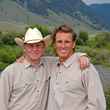






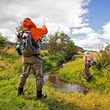
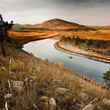



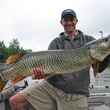
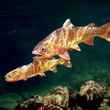



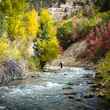




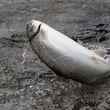
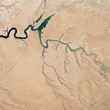


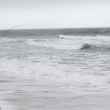
Comments